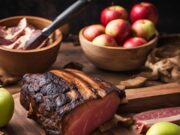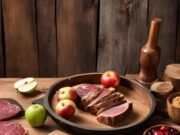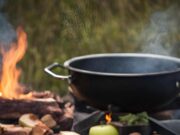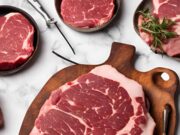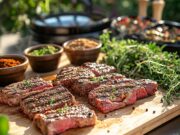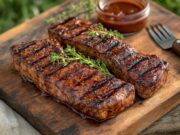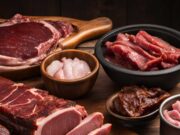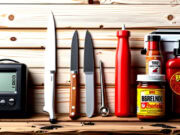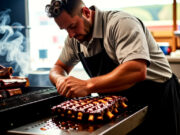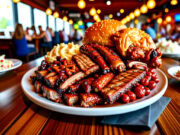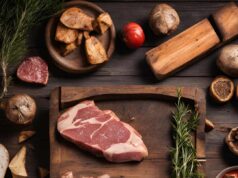Rotisserie grilling enhances the culinary process, resulting in succulent, evenly cooked meats that are sure to impress any audience.
It is essential to understand the basics of trussing and securely positioning your meat on a rotisserie spit. This guide outlines the key steps, from selecting the right cuts of meat to mastering the trussing technique, providing practical tips and tricks for a successful experience.
Regardless of whether you are a seasoned grill master or a curious newcomer, you will find yourself well-equipped for a delicious rotisserie experience.
Key Takeaways:
- Trussing meat is essential for even cooking on a rotisserie grill. Choose and clean your meat properly before trussing.
- Invest in essential tools like butcher’s twine and meat forks for a successful rotisserie grilling experience.
- Follow a step-by-step guide to properly truss and secure your meat on the rotisserie spit, and use cooking tips for perfectly grilled meat.
Essential Tools for Trussing and Rotisserie Cooking
When preparing for rotisserie grilling, it is essential to have the right tools to ensure success. Key equipment includes:
- a reliable grill
- butcher’s twine
- a meat thermometer
- a drip pan to catch the juices
Preparing the Meat
Preparing the meat for rotisserie grilling is a crucial step that involves selecting the appropriate cut and cleaning it thoroughly. This preparation enhances the meat’s flavor and contributes to a delicious final result.
Choosing and Cleaning Your Meat
Selecting the right type of meat, particularly chicken, is essential for a successful rotisserie grilling experience, and proper cleaning is a critical first step in your preparation process.
When considering meat, evaluate not just the type but also the quality and specific cuts that will best suit your grilling style. Factors such as tenderness, fat content, and freshness significantly influence the ultimate flavor and juiciness of your grilled dish. Thoroughly cleaning the meat is paramount, as it helps eliminate unwanted residues and pathogens, ensuring a safe cooking environment.

Utilizing marinades or brines can effectively enhance the flavor profile, infusing the meat with delicious seasonings and moisture that make each bite more enjoyable. A thoughtful selection process can dramatically elevate your grilling experience.
Step-by-Step Guide to Trussing Meat
Trussing meat is a straightforward yet essential process that involves securely tying the meat with butcher’s twine. This technique ensures even cooking and contributes to a professional presentation.
How to Properly Truss Your Meat
To properly truss your meat, begin by placing it on a clean surface. Use butcher’s twine to secure the legs and wings close to the body, preventing them from overcooking. This technique not only promotes even cooking but also contributes to a beautifully presented dish.
When trussing poultry, ensure that you cross the twine over the legs, wrapping it securely to hold them tightly together. For larger cuts, such as roasts, a simple square knot will effectively keep everything in place, ensuring that the stuffing remains inside and flavors meld beautifully.
For those who prefer visual guidance, there are numerous online tutorials that illustrate these methods step by step, covering the entire process from preparation to final presentation. Additionally, exploring related terms like “butcher’s knot” and “saddle trussing” can provide further insights into advanced techniques for various meats, ultimately helping to elevate your culinary skills.
Loading and Securing the Meat on the Rotisserie Spit
Loading and securing your meat onto the rotisserie spit correctly is essential for achieving even cooking and preventing mishaps during the grilling process.
To begin, select a sturdy spit that can accommodate the weight and size of the meat; this will help prevent unnecessary wobbling. As you slide the meat onto the spit, ensure it is centered to maintain balance. Utilizing metal skewers or butcher’s twine can provide additional support, keeping the meat tightly secured throughout the cooking process.
Be sure to tighten any adjustable grips on the spit, as this will aid in preventing slippage. Consider using a marinade injector to infuse flavor while also helping the meat adhere better, ensuring it remains firmly in place as it rotates.
Cooking Tips for Perfect Rotisserie Grilling
Perfecting the art of rotisserie grilling necessitates a combination of precise cooking techniques, an understanding of optimal temperatures and cooking times, and careful attention to safety practices.
Setting Up the Grill and Cooking Times
Setting up your grill properly requires a clear understanding of the correct temperature settings and cooking times, both of which are crucial for achieving tender and juicy meat.
To begin, it is essential to select the appropriate fuel type—whether charcoal, propane, or natural gas—as this choice will directly impact the heat level and flavor of the meat. Once the grill is ignited, the next step is to ensure even heat distribution by preheating the grill for about 10-15 minutes.
As the cooking process unfolds, it is important to monitor the timing closely to prevent overcooking; utilizing a meat thermometer can be invaluable in this regard. Aim for specific internal temperatures depending on the type of meat, and consider employing a two-zone setup to achieve that perfect sear and doneness without sacrificing juiciness.
Frequently Asked Questions
1. What is the purpose of trussing and spitting meat for rotisserie grilling?
Trussing and spitting meat helps to keep it securely in place on the rotisserie, preventing it from spinning or falling off during the cooking process.
2. What types of meat are best for rotisserie grilling?
Large, whole cuts of meat such as chicken, turkey, pork loin, and beef roasts are ideal for rotisserie grilling.
3. How do I truss and spit a whole chicken for rotisserie grilling?
Start by tying the legs together with kitchen twine and then securing the wings to the body. Next, insert the spit rod through the chicken’s cavity and out through the neck. Make sure the chicken is centered on the rod before securing it with the prongs.
4. Can I use any type of spit rod for rotisserie grilling?
No, it is important to use a spit rod specifically designed for rotisserie grilling as it will be able to withstand high heat and weight of the meat.
5. How do I ensure even cooking when using a rotisserie grill?
Make sure to balance the weight of the meat on the spit rod and rotate it regularly to ensure even cooking. You may also want to use a meat thermometer to monitor the internal temperature of the meat.
6. How long should I cook meat on a rotisserie grill?
The cooking time will vary depending on the type and size of the meat. As a general rule, plan on cooking large cuts of meat for 15-20 minutes per pound. It is always best to use a meat thermometer to check for doneness.


